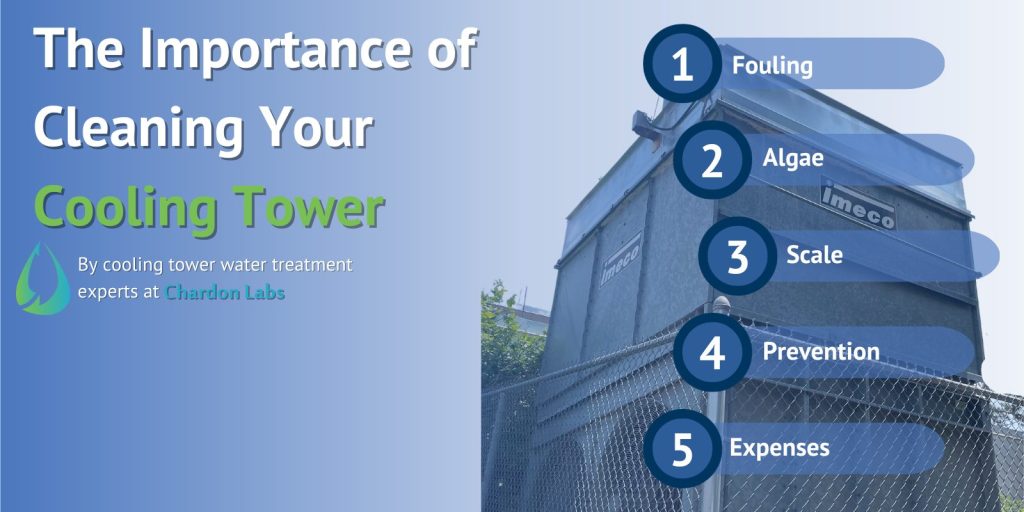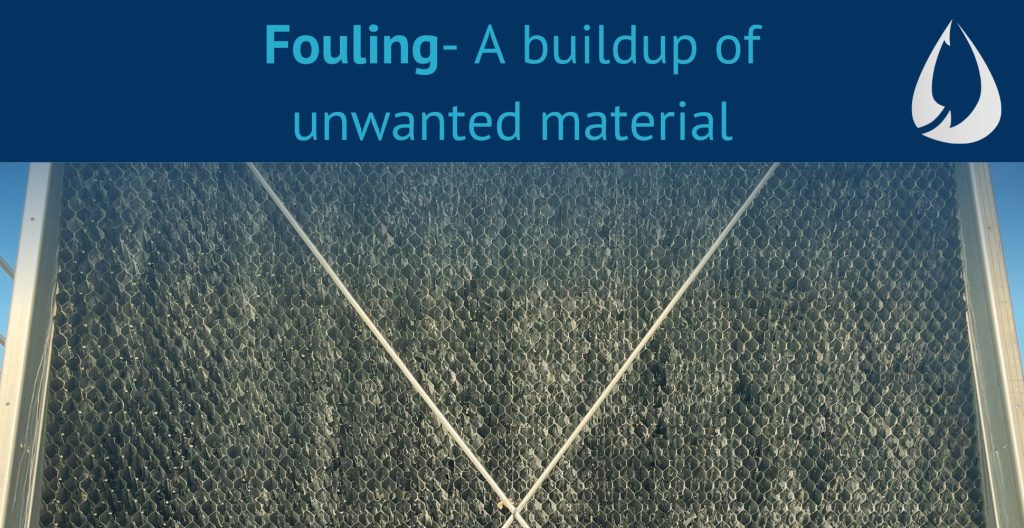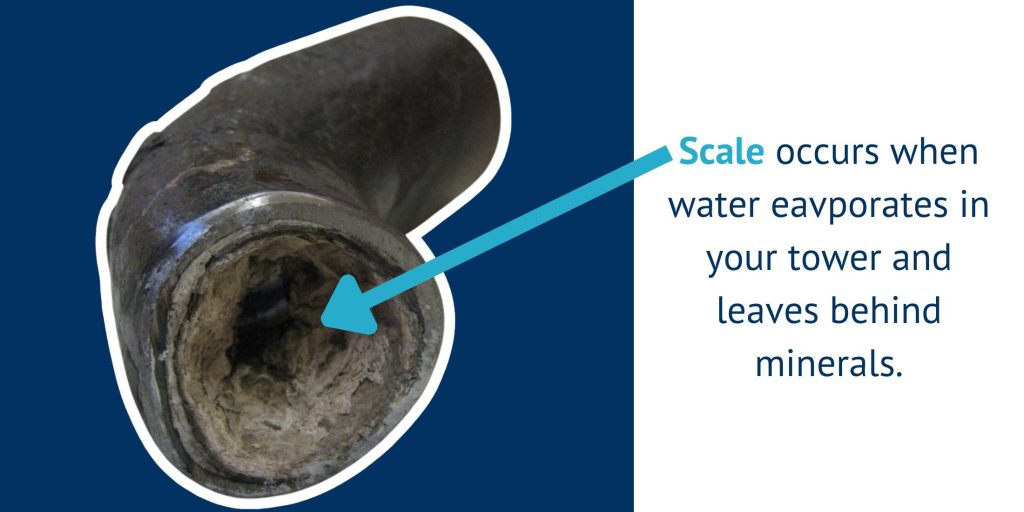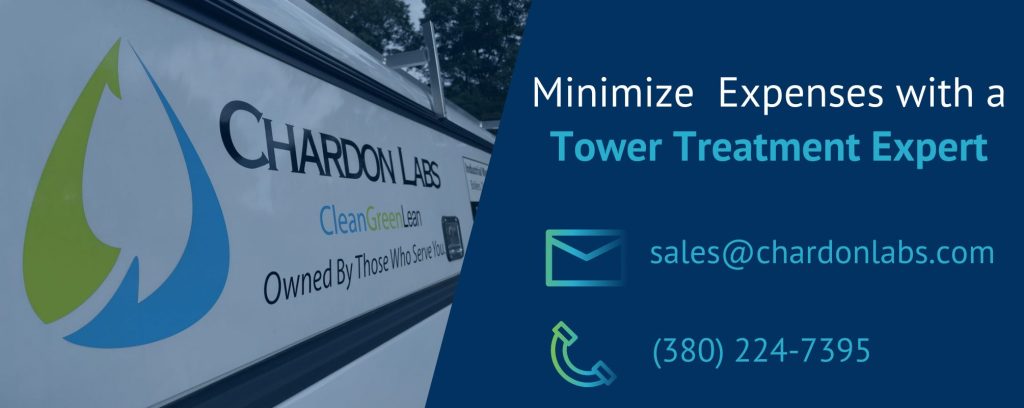
September 28, 2023
Running a system that is regularly cleaned impacts energy efficiency and savings. Additionally, it prolongs equipment life. Also, it can help control harmful pathogens like Legionella. It is important to have a clean system as it will prolong equipment life and improve energy efficiency. The value of protection against costly problems such as fouling and Legionella transmission will be discussed in this article.
Problems with Dirty Cooling Towers
Fouling

In the summertime and other warm months, it is especially important to treat for bacteria. Summer is when the water gets hot and creates conditions for various strains of bacteria to thrive. During the winter months, bacteria go dormant, waiting for warmer weather and an oxygen and nutrient-rich environment. Once circulation resumes, the bacteria are in a perfect environment for incubation (plenty of oxygen, nutrients scrubbed from the air, and water temperatures ideal for growth).
Biofilm compounds these problems and is especially problematic in water cooling equipment that operates intermittently during the cooler months. The problems could be severe if the operation only occurs for a few hours a week. Equipment left filled with water and untreated will see corrosion attack on chiller end bells, tube sheets, and condenser water pipes that will lead to pitting, and ultimately, failure.
Also, scale builds up and eventually flakes off and collects in tower distribution pans as rust chips. These rust chips can cause cooling tower distribution pans to overflow resulting in reduced cycles of concentration, increased water usage, accelerated corrosion rates, and ultimately shorter equipment life. Biofilm also prevents corrosion inhibitors from reaching the base metal. There are risks of health hazards as well with Legionella. When the air is vaporized, Legionella can spread into the surrounding area around the cooling tower.
Algae
If sunlight reaches a cooling tower, algae will likely grow. They also grow in similar conditions to bacteria where the water is warm and nutrient-rich. In small quantities, algae do not significantly impede heat transfer. However, it is not a problem that will go away on its own and it will continue to get worse if it is not treated. Thick mats of algae can promote under-deposit corrosion and harbor other damaging bacteria. Long strands of algae that break free can clog strainers or other fine orifices in your system. Algae die quickly once they break free of their hold in the sun and flow into the darkness of a piping system. Dead algae will then decompose and can provide nutrients for bacterial communities, but the main impact of algae is the clogging of intake screens and other strainers in the system.
Scale

Scale buildup greatly decreases heat transfer efficiency in a cooling tower. Also, it adds an insulated sediment layer to the heat exchange surfaces between the metal and the water. This occurs when water evaporates in the normal operation of cooling towers, minerals are left behind. Over time, these minerals build up to form scale. Geographic areas with hard water are particularly at risk. The type of scale can differ from calcium (carbonate/phosphate/sulfate) or silica. These different types of scaling can be difficult to remove as specialized procedures are necessary for each type.
Corrosion
Corrosion in a cooling tower can lead to damaged equipment and decreased efficiency. Fouling and algae buildups can contribute to Microbial microbial-influenced corrosion (MIC) occurs when bacteria create an electrochemical breakdown down the metal surfaces in a cooling tower. Solutions such as biocide and corrosion inhibitors which prevent chemical reactions linked to corrosion can help protect against it.
Prevention
Chlorine and other chemical treatments can help kill and prevent bacteria fouling and algae contamination. Specialized inhibitors are utilized to prevent scaling and corrosion. Preventative and reactive maintenance must be done to help control these problems. Implementing monitoring and testing procedures will greatly help with this. In addition to chemical procedures, you can manually clean the system as well by spraying and scrubbing it down in addition to the chemical treatment in place.
Expenses

Energy costs can become 50% more expensive just by operating on a dirty system. Heat transfer only works well if the chemistry in the tower is keeping the water and metal surfaces clean.
Cooling towers are designed to cool water with forced air. While these systems are in operation, the water is circulating and typically treated to prevent scale, corrosion, and bio-fouling (algae and bacteria growth). Systems often sit idle during the cooler months because the cooling demand isn’t as great, and some systems are drained over the winter.
Most cooling towers and condenser water piping systems require chemical treatment to protect against corrosion. Chemical treatment also prevents microbiological growth from promoting biofilms which can reduce heat transfer, restrict flow, and harbor potentially dangerous bacteria like Legionella.
Cooling tower systems that operate intermittently during the cooler months have similar problems. While most treatment products remain active in the system even when it is not circulating, biocides have a certain half-life, and even scale inhibitors can lose their effectiveness over time. Condensers and other heat exchangers that remain full of water for weeks or months will experience bacterial growth that can result in biofilm formation and corrosion.

Matt Welsh
Matt Welsh is the Vice President and Water Consultant at Chardon Labs. He helps consult a wide range of customers utilizing various methods of water treatment, from chemical to chemical-free approaches, large and small applications, and across a wide range of geographical influences. With 20 years of water treatment experience, including a wide range of troubleshooting and service in potable water and non-potable HVAC and industrial applications, he is an expert in water treatment chemistry for cooling towers, boilers, and closed-loop systems.
